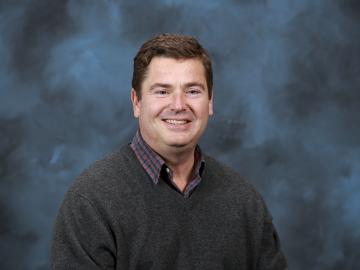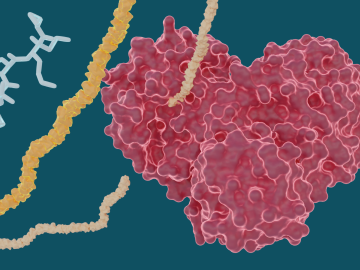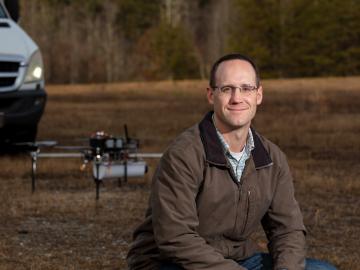
Filter News
Area of Research
- Advanced Manufacturing (2)
- Biology and Environment (20)
- Computational Engineering (1)
- Computer Science (3)
- Energy Science (28)
- Fuel Cycle Science and Technology (1)
- Fusion and Fission (10)
- Fusion Energy (1)
- Isotope Development and Production (1)
- Isotopes (3)
- Materials (25)
- Materials for Computing (2)
- National Security (11)
- Neutron Science (13)
- Nuclear Science and Technology (7)
- Quantum information Science (1)
- Sensors and Controls (1)
- Supercomputing (38)
News Type
News Topics
- (-) Advanced Reactors (12)
- (-) Artificial Intelligence (35)
- (-) Coronavirus (17)
- (-) Education (3)
- (-) Grid (16)
- (-) High-Performance Computing (32)
- (-) Machine Learning (13)
- (-) Nuclear Energy (28)
- (-) Quantum Science (31)
- (-) Security (12)
- 3-D Printing/Advanced Manufacturing (48)
- Big Data (8)
- Bioenergy (25)
- Biology (26)
- Biomedical (17)
- Biotechnology (10)
- Buildings (15)
- Chemical Sciences (35)
- Clean Water (2)
- Composites (12)
- Computer Science (63)
- Critical Materials (11)
- Cybersecurity (17)
- Element Discovery (1)
- Energy Storage (43)
- Environment (38)
- Exascale Computing (13)
- Fossil Energy (1)
- Frontier (16)
- Fusion (17)
- Isotopes (20)
- ITER (2)
- Materials (60)
- Materials Science (56)
- Mercury (2)
- Microelectronics (1)
- Microscopy (17)
- Molten Salt (3)
- Nanotechnology (29)
- National Security (18)
- Neutron Science (54)
- Partnerships (31)
- Physics (26)
- Polymers (13)
- Quantum Computing (13)
- Simulation (10)
- Space Exploration (3)
- Statistics (1)
- Summit (22)
- Transportation (26)
Media Contacts

David Kropaczek, director of the Consortium for Advanced Simulation of Light Water Reactors, or CASL, at the Department of Energy’s Oak Ridge National Laboratory, has been named a fellow of the American Nuclear Society.

Experiments led by researchers at ORNL have determined that several hepatitis C drugs can inhibit the SARS-CoV-2 main protease, a crucial protein enzyme that enables the novel coronavirus to reproduce.

ORNL has added 10 virtual tours to its campus map, each with multiple views to show floor plans, rotating dollhouse views and 360-degree navigation. As a user travels through a map, pop-out informational windows deliver facts, videos, graphics and links to other related content.

To better understand how the novel coronavirus behaves and how it can be stopped, scientists have completed a three-dimensional map that reveals the location of every atom in an enzyme molecule critical to SARS-CoV-2 reproduction.

An international multi-institution team of scientists has synthesized graphene nanoribbons – ultrathin strips of carbon atoms – on a titanium dioxide surface using an atomically precise method that removes a barrier for custom-designed carbon

Experts at the Department of Energy’s Oak Ridge National Laboratory are now offering short-term technical and scientific assistance to entities working to combat the coronavirus through the COVID-19 Technical Assistance Program, an initiative of DOE’s Office of Technology Transitions.

Researchers at ORNL used quantum optics to advance state-of-the-art microscopy and illuminate a path to detecting material properties with greater sensitivity than is possible with traditional tools.

Oak Ridge National Laboratory researchers have developed artificial intelligence software for powder bed 3D printers that assesses the quality of parts in real time, without the need for expensive characterization equipment.

Horizon31, LLC has exclusively licensed a novel communication system that allows users to reliably operate unmanned vehicles such as drones from anywhere in the world using only an internet connection.

After its long journey to Mars beginning this summer, NASA’s Perseverance rover will be powered across the planet’s surface in part by plutonium produced at the Department of Energy’s Oak Ridge National Laboratory.


